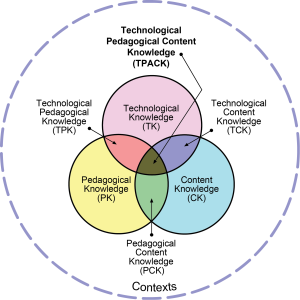I spent most of today at an iPads in Education event organised by Jigsaw24 (an IT solutions company specialising in education).
It opened with Andy Nagle from Apple. Unsurprisingly he stressed the importance of design and illustrated this with the final sequence of Pablo Picasso’s Essence of Bull. Some die-hard anti-Apple types might find that title strangely fitting 🙂 He then talked about toasters – an object he claims lie unused in your house for 98% of their life. Thus you don’t just buy them for their function – design matters. [I wonder what he’d make of my “toaster” – an AGA?] Whilst good design is a very nice thing to have, I don’t think he really made it clear why design matters in education. Several presenters gave reasons why it might be over the course of the day. Phrases such as “it just works” and “it has to work first time and every time” being frequently uttered by presenters and delegates alike. Whatever 21st century learners may be like, it seems their teachers are not tolerant of technical compatibility issues 🙂
Andy introduced a couple of models that seem to have been very important in shaping Apple’s thinking: Ruben Puentedura‘s SAMR model – Substitution, Augmentation, Modification, Redefinition and Matthew Koehlers’ TPACK – Technological Pedagogical Content Knowledge – where the key is that each of these three aspects is of equal importance. Some people I know may take issue with that, but I can see the sense in this if we are thinking about learning as opposed to teaching.
Although we didn’t see this video today, this “horse’s mouth” video explains these theories well. In the US, many in education see the challenge as moving education “above the line” – from enhancement activities (SA) to transformational activities (MR).
It ends with an interesting set of nine components he thinks should be part of any 21st Century Learning. That is something I should give more thought to in a future post.
Later surfing showed that some people have even tried to apply this framework to iPad apps: http://edudemic.com/wp-content/uploads/2013/05/padagogy-version2.png – I thought that this was interesting but I don’t think any blanket categorisation like this can ever hold up. What is transformative in one situation may be only augmenting existing practice in another.
Andy then left the building Elvis style and we were left in the capable hands of Abdul Chohan from the ESSA Academy.

He spoke about the way they had transformed a failing school. It was an inspiring talk and you can get a feel for the impact this whole-scale rebuild of the school, its processes, attitudes and beliefs in this Apple video case study: https://www.apple.com/uk/education/real-stories/essa/
He had amazing clarity of vision. His business, he said was learning. What he was trying to do was reduce the time people spent on “busy-ness” (processes/admin) rather than “the business” – learning. As well as the technological change, the school had looked hard at the accompanying processes. By moving a lot of activities to the iPad, he felt many became more transparent and more visible. Parents could see content on their child’s iTunesU site being updated at night or over the weekend, helping to dispell the myth that teachers stop work when the bell rings at 3.15. Staff could take registers and the data was instantly uploaded into the school’s MIS.
There were a range of other good presentations, most of which just managed to avoid being an out and out sales pitch. One looked at the networking needs – all this mobile technology will put considerable strains on your wireless network. Networks, it seem are not all the same. Lots of iPads need management. There are tools for this, and some include a series of content filters and access locks. These can be used so that staff, students and parents can all see what they were used for outside school (so no downloading porn or your kid’s iPad folks, or you’ll get a strongly worded letter from the Head!) I also learned about some of the built in accessibility features in iOS. The Invert Colours feature was clever (though not all apps seem to support it). As an aside, I wonder if switching from a largely white to largely black screen would have any impact on battery life?
The last major presentation looked at another iPad roll-out from a local school which sounds a bit like a crematorium – Stephenson Memorial Primary School. Emma Overton spoke about their iPad@myPad project. One of the most interesting things to me was the way they had involved the children, recognising and fostering their skills. They recruited a series of “geniuses” – borrowing from the Apple lingo (who later appointed themselves assistants) – each with declared areas of expertise – e.g. Twitter, blogging, iBooks. This was seen to significantly change the way staff and students engaged with each other, with these geniuses supporting other students, or “bought in” to help staff plan or develop particular aspects of their teaching. I think this is a model that could (indeed should) make the transition to HE. There were also some great stories of how a technical intervention can help stimulate the children to improve through greater engagement. My favourite was using the Aurasma augmented reality app to bring the children’s drawings of dragons to life, demanding better stories. That might be harder to transpose to the HE setting…
All in all a very thought provoking day that really through down the gauntlet to higher education. If this is how these children are learning now, how can we continue this process and challenge them (in a positive productive way) should they choose to come to a University?
Featured Image: http://www.flickr.com/photos/aperturismo/4488250788/
![]()


I hope I was able to demonstrate that we are very much alive and kicking at ‘Stephenson Memorial’. Thank you for highlighting our good points too. Stephenson Digital Leaders are absolute superstars!
LikeLike